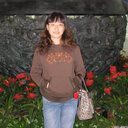Transmissibility of Norovirus in Urban Versus Rural Households in a Large Community Outbreak in China.
Paraules clau
Resum
Norovirus is a leading cause of outbreaks of acute infectious gastroenteritis worldwide, yet its transmissibility within households and associated risk factors remain unknown in developing countries.
Household, demographic, and clinical data were collected from a semi-urban area in south China where an outbreak occurred in the winter of 2014. Using a Bayesian modeling framework, we assessed the transmissibility and potential risk modifiers in both urban and rural households.
In urban apartment buildings, the secondary attack rates were 84% (95% credible interval [CI] = 60%, 96%) among households of size two and 29% (95% CI = 9.6%, 53%) in larger households. In the rural village, secondary attack rate estimates were lower than the urban setting, 13% (0.51%, 54%) for households of size two and 7.3% (0.38%, 27%) for larger households. Males were 31% (95% CI = 3%, 50%) less susceptible to the disease than female. Water disinfection with chlorine was estimated to reduce environmental risk of infection by 60% (95% CI = 26%, 82%), and case isolation was estimated to reduce person-to-person transmission by 65% (95% CI = 15%, 93%). Nausea and vomiting were not associated with household transmission.
Norovirus is highly contagious within households, in particular in small households in urban communities. Our results suggest that water disinfection and case isolation are associated with reduction of outbreaks in resource-limited communities.



